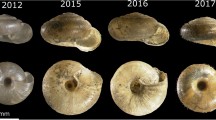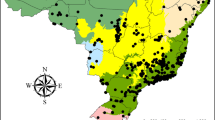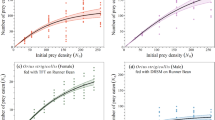Abstract
IT is not usually possible to discover what factors control any particular population, that is, what factors act more strongly against the population as it increases and so tend to keep its numbers constant. In a small planted beech wood just west of Marlborough (Nat. Grid Ref. SU 175680) there is a population of the common snail Helix aspersa which seems to be controlled in a very simple manner. The trees have small buttresses at their bases, leaving narrow caves between, and in the winter the snails crawl into the caves to hibernate. When I visited the wood on January 21, 1954, with Drs. S. M. McGee Russell and P. M. Sheppard, we found no aspersa were hibernating near the outsides of the caves: all were deeply inside. When Dr. Sheppard visited the copse in the previous autumn there were many snails not fully in the crevices, and he tells me that there were far fewer predated shells then than we saw in January. It was as if all snails which were hibernating in a position in which a predator could reach them had been eaten, while those in inaccessible positions survived. As these inaccessible positions would not change greatly from year to year, this system would keep the population at a constant size in the same way that an overflow pipe keeps water in a tank at constant depth. Squirrels were probably the predator concerned.
This is a preview of subscription content, access via your institution
Access options
Subscribe to this journal
Receive 51 print issues and online access
$199.00 per year
only $3.90 per issue
Buy this article
- Purchase on SpringerLink
- Instant access to full article PDF
Prices may be subject to local taxes which are calculated during checkout
Similar content being viewed by others
Author information
Authors and Affiliations
Rights and permissions
About this article
Cite this article
WILLIAMSON, M. An Apparently Simple Case of Population Control. Nature 182, 1108 (1958). https://doi.org/10.1038/1821108b0
Issue date:
DOI: https://doi.org/10.1038/1821108b0



